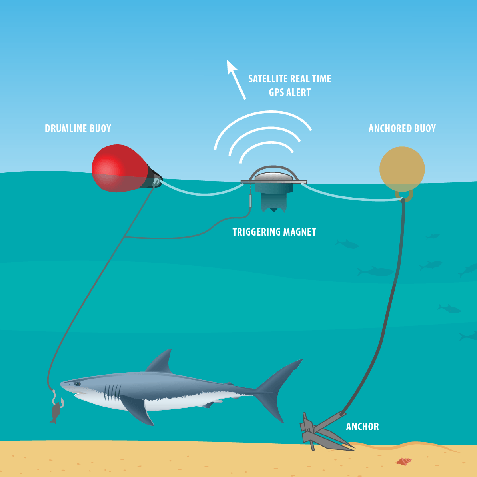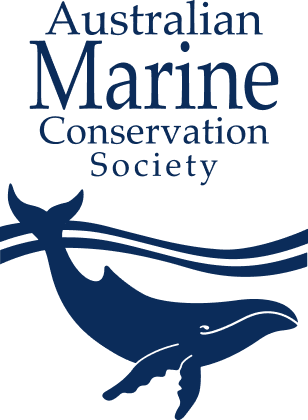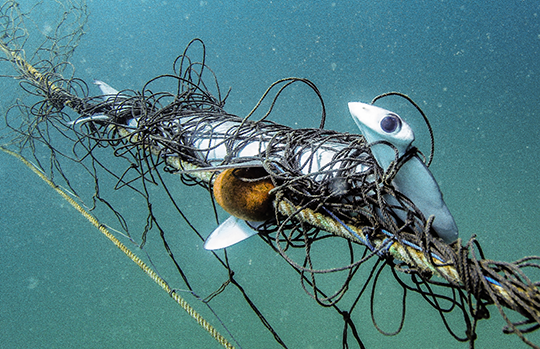Last weekend, New South Wales Minister for Agriculture, Dugald Saunders, promoted an $85 million investment in shark bite risk mitigation methods over the next four years. As a result, NSW will see additional instalments of SMART drumlines, more drone surveillance, listening stations, and tags for when large sharks are caught on the SMART drumlines.
For the past few years, and as stated by the Minister for Agriculture himself, NSW has honestly and truly been a world leader in the trials of non-lethal shark bite risk mitigation with the aforementioned listening stations, drone surveillance, and of course the SMART drumlines.
SMART drumlines, a clever acronym for Shark Management Alert in Real Time, are fairly similar to a traditional drumline, such as those used in NSW in the past, and currently still in operation on much of Queensland’s coast. They consist of a large, baited hook on a buoy or large float, which is then anchored to the seafloor. However, SMART drumlines differ from traditional drumlines in that they have a satellite GPS alert that is triggered when an animal of any kind takes the bait. A message is then sent to a contractor who can attend to the drumline within a half an hour to an hour. If the hooked animal is a non-target animal, such as a turtle or small shark, it is immediately released on site. If the hooked animal is a target species (tiger shark, bull shark or great white shark) of a certain size, the shark is tagged so its movements can be tracked and relocated offshore. This way, SMART drumlines are intended to be non-lethal, while providing researchers a way to learn more about the movement patterns of these larger species.
 Image courtesy of NSW Department of Primary Industries
Image courtesy of NSW Department of Primary Industries
One hundred and seventy SMART drumlines are currently, or will be shortly installed off the NSW coast. While certainly an improvement over the archaic, destructive and ineffective shark nets, concerns certainly remain. Not only are animals still being violently caught, some of which will not survive, but the drumlines now ensure baited hooks are positioned near our most popular beaches. It’s not so very far a leap to suggest these baited hooks could be attracting large sharks closer to our beaches.
The other technologies funded by the new announcement are listening stations and drone surveillance – both effective methods for detecting large sharks before they can be a concern to swimmers and ocean-users, without any impact on marine wildlife.
But even with this significant injection of funds into the Shark Management Strategy, and newfound faith in the latest shark bite risk mitigation technologies, the nets will remain. Nets that cost the NSW tax-payer 1.8 million dollars per year, and provide nothing more than a false sense of security.
It would seem as though NSW is caught in two minds. Encouraged by the success of their trials and public support for non-lethal alternatives, the government has introduced sweeping changes to the Shark Management Strategy and invested a King’s Ransom into implementing these new technologies. Yet they still hold onto the past with a wildlife death grip. It’s as if everyone without and within government is ready to move on from the nets but no one is prepared to pull the trigger.
Shark nets at ocean beaches in NSW killed 231marine animals last year alone. In that time, a turtle was killed every 20 days, and a dolphin killed every 40.
The Minister was right, NSW is a world-leader in trialling measures of shark bite risk reduction that can effectively reduce the, but until he gets rid of the shark nets, NSW will also be a world leader in killing marine wildlife in a misguided attempt at public safety.






